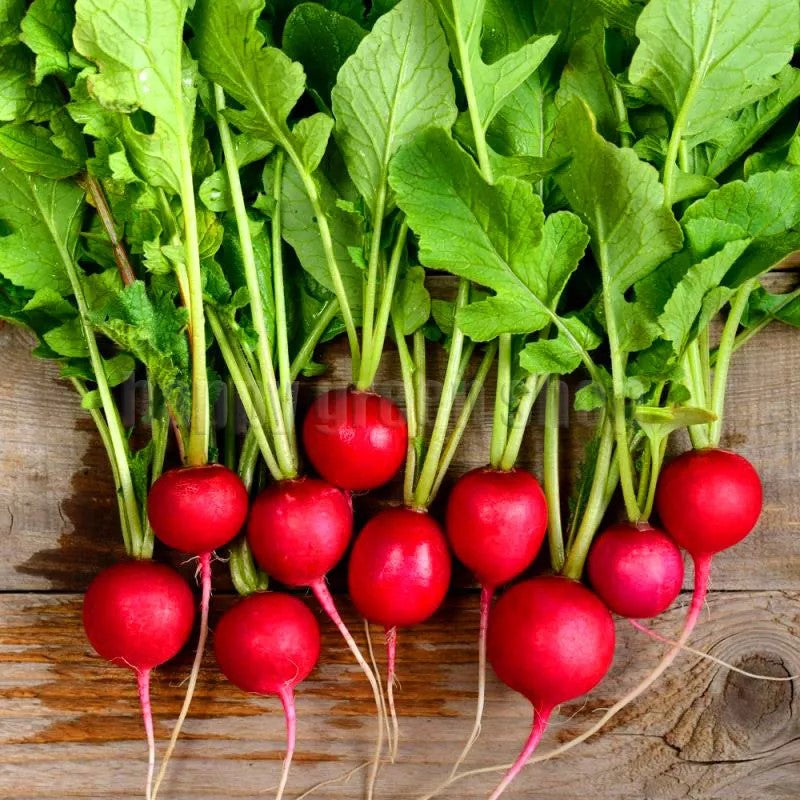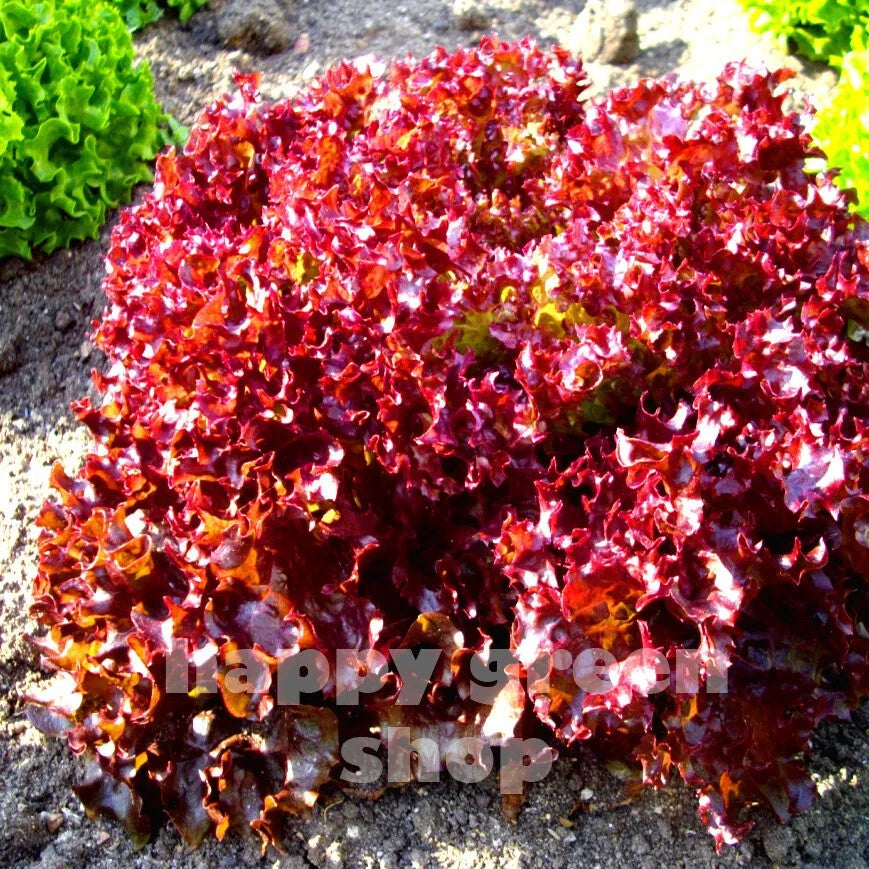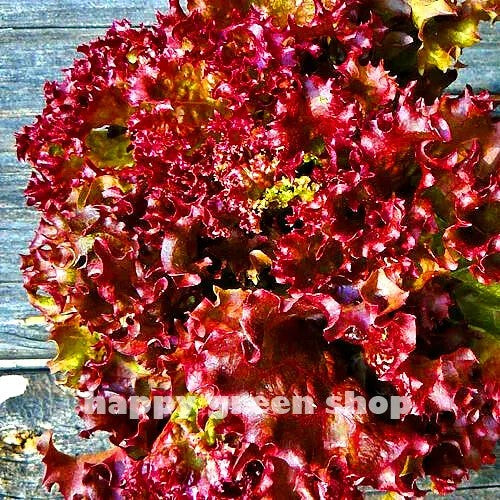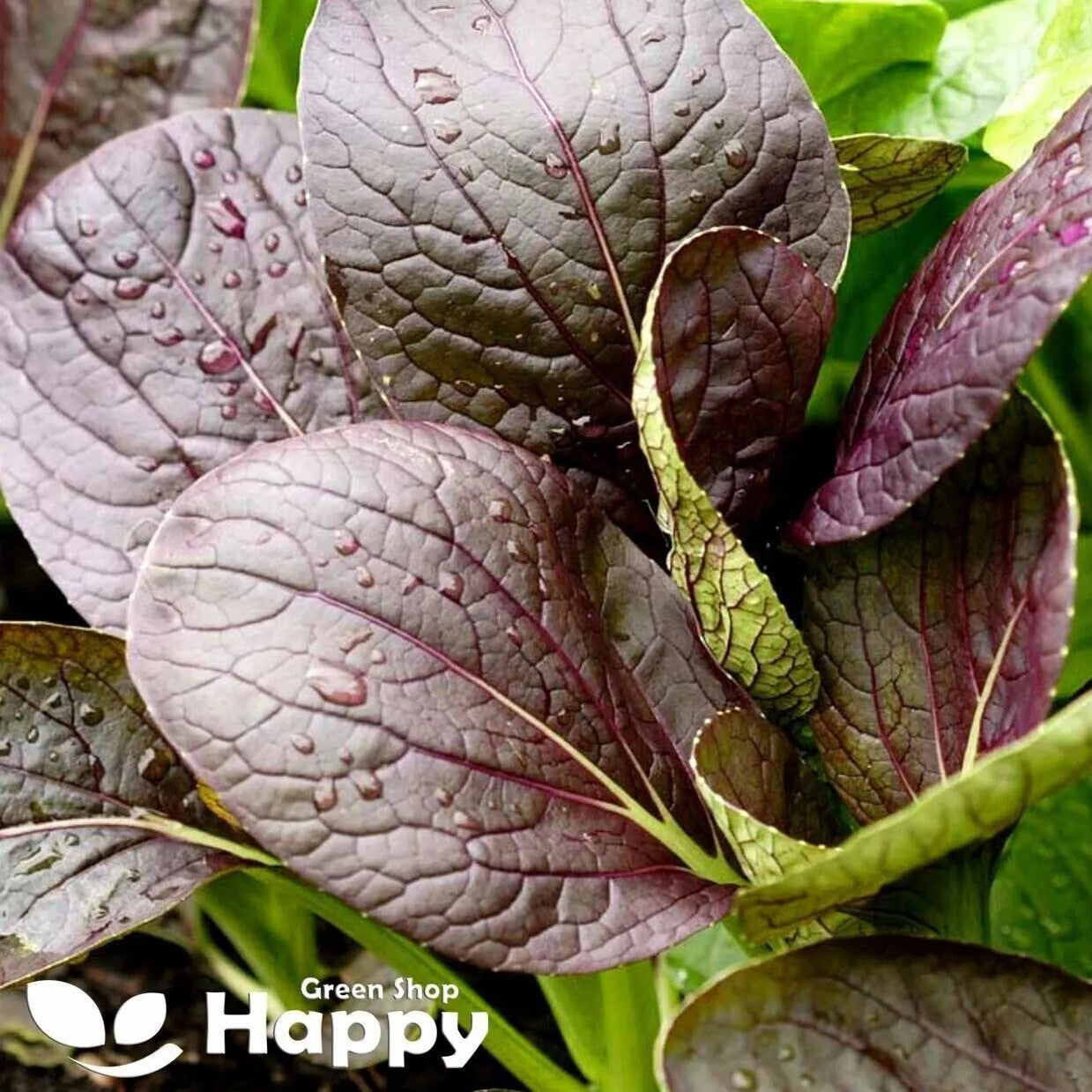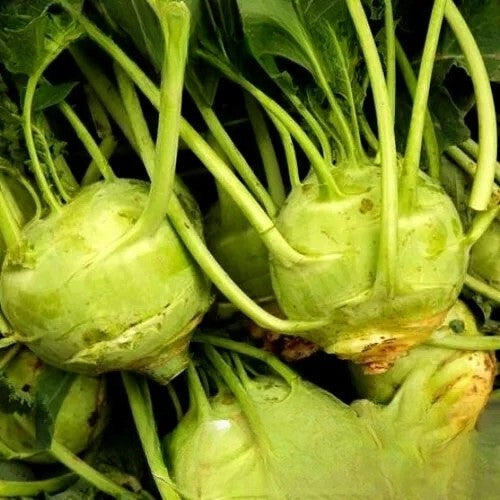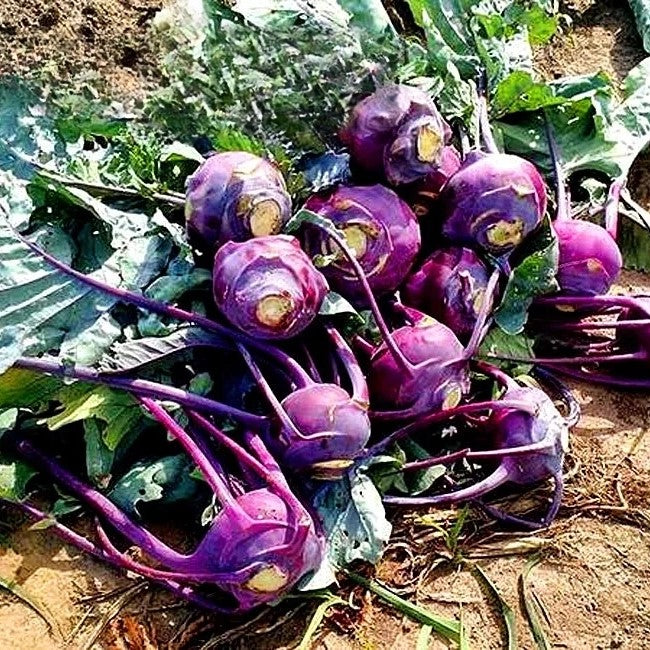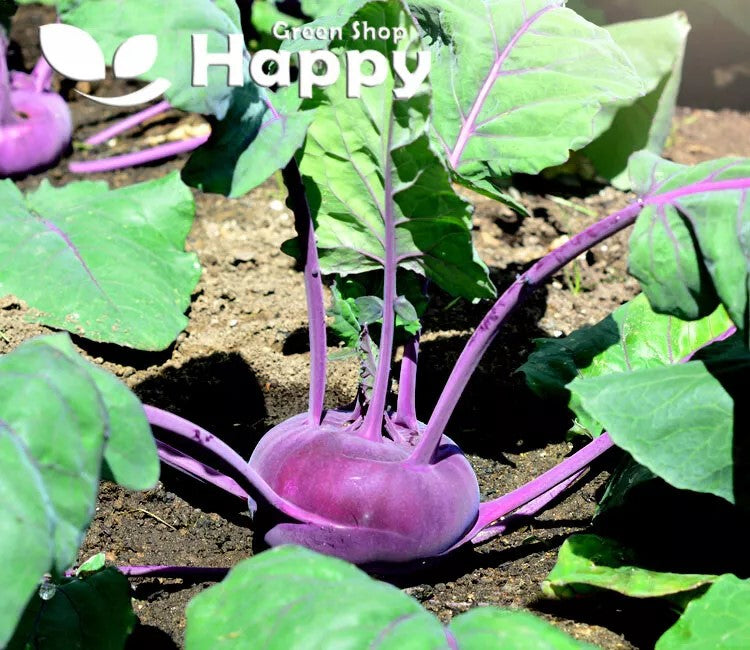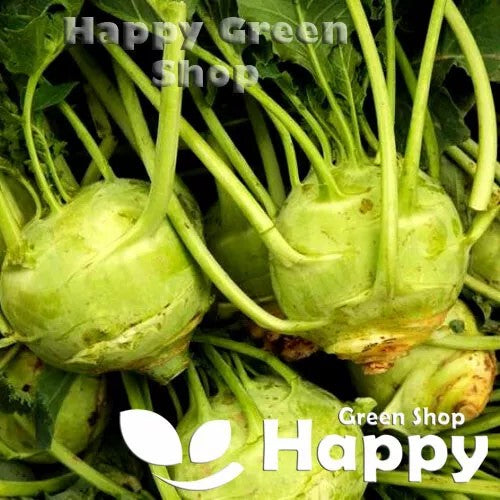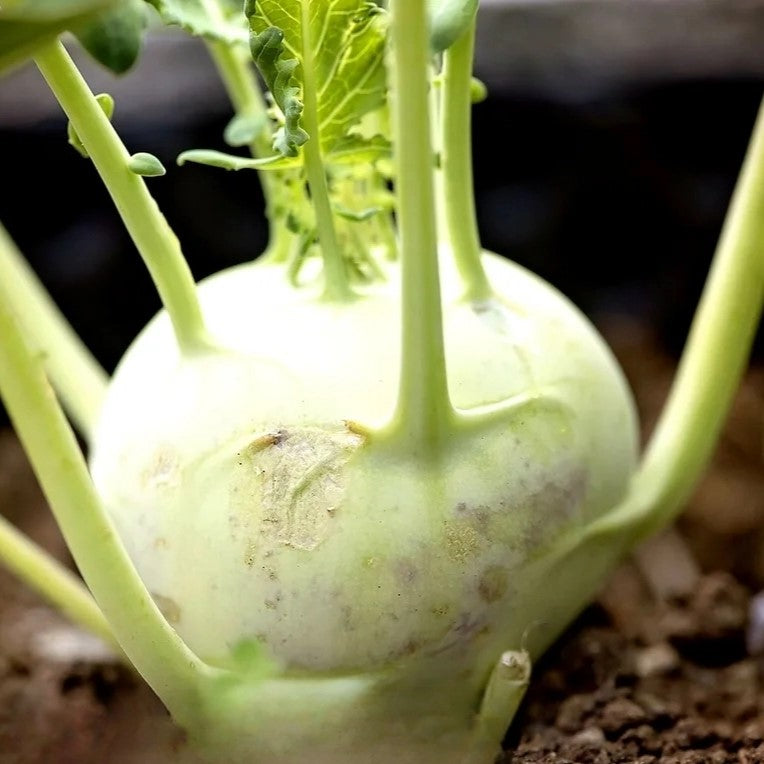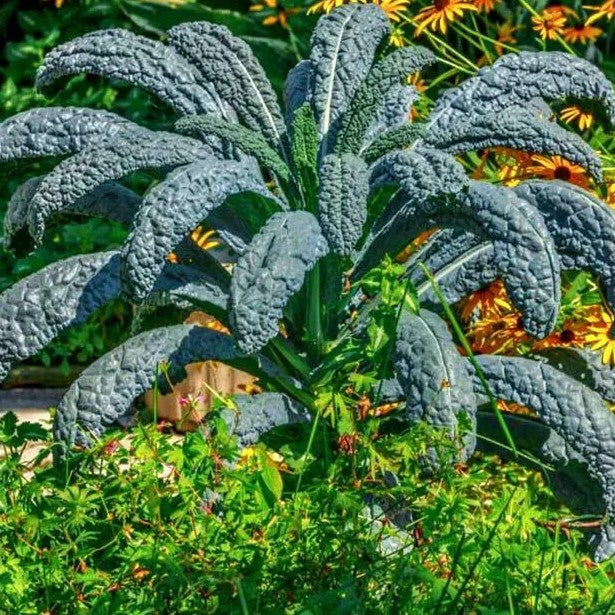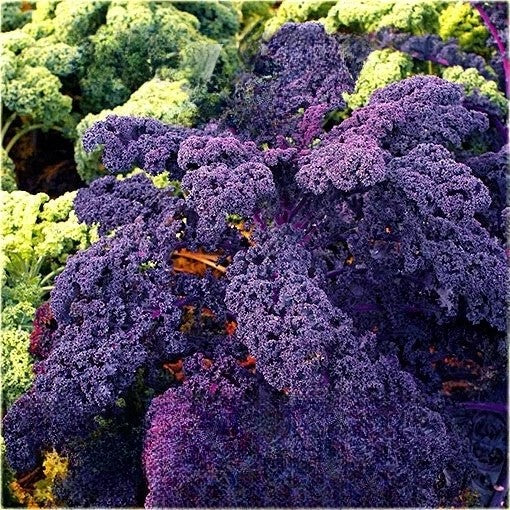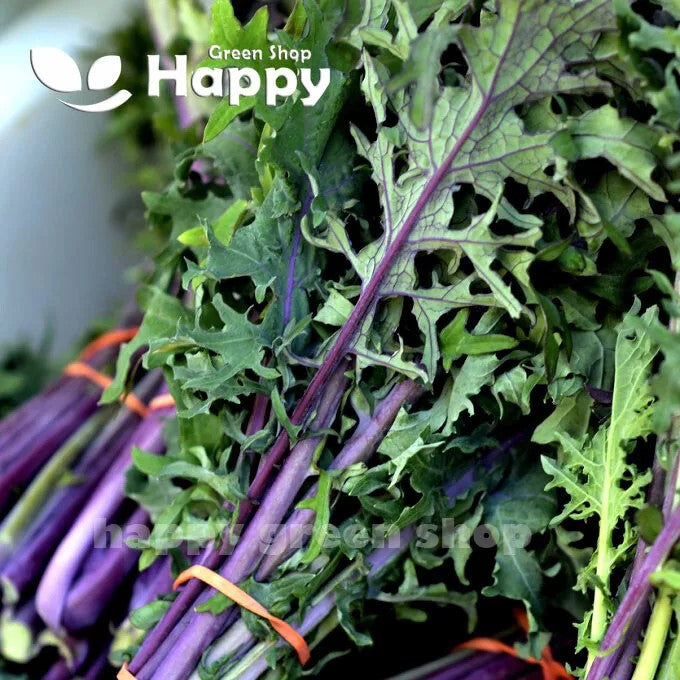Sort by:
225 products
225 products
Lettuce 'Lollo Rosso' – Seeds (Lactuca sativa)
Brighten your salad bowl with Lettuce 'Lollo Rosso', a classic Italian variety admired for its deep red, frilly leaves and tender, crisp texture. With its mild yet slightly tangy flavor, this cut-and-come-again lettuce is perfect for adding both color and crunch to salads, sandwiches, and garnishes. Easy to grow, quick to mature, and highly decorative in the garden.
How to Grow
. Sow indoors from February to April or directly outdoors from March to July
. Sow thinly, 0.5 cm deep in rows 25–30 cm apart
. Thin seedlings to 20 cm apart for full-sized heads
. Prefers full sun and fertile, well-drained soil
. Water regularly to keep leaves tender and sweet
Key Features
. Attractive red, frilled leaves for striking salads
. Mild, slightly tangy flavor
. Cut-and-come-again variety for multiple harvests
. Decorative and productive in beds or pots
. Quick to mature, reliable crop
Ideal For
. Fresh salads and sandwiches
. Cut-and-come-again harvesting
. Adding color to kitchen gardens or containers
. Home cooks and salad lovers
Sowing & Harvest
. Sow: February – July
. Harvest: May – September
Quick Tip
Harvest outer leaves regularly to extend cropping, or cut the whole head at the base for a fuller harvest.
Lemon Balm – Seeds (Melissa officinalis)
Lemon Balm is a hardy perennial herb valued for its refreshing lemon-scented leaves. Perfect for teas, desserts, and savory dishes, it also makes a soothing herbal remedy often used to promote relaxation. Its fragrant foliage attracts bees and pollinators, while its resilience makes it an easy-to-grow choice for gardens, pots, or borders.
How to Grow
-
Sow indoors: March – May in trays at 18–20°C.
-
Sow outdoors: May – July in a sunny or lightly shaded spot.
-
Thin or transplant seedlings to 30 cm apart.
-
Prefers fertile, well-drained soil.
-
Cut back after flowering to encourage fresh growth.
Key Features
-
Hardy perennial with refreshing lemon scent
-
Aromatic leaves for teas, salads, and cooking
-
Excellent for herbal remedies and relaxation
-
Attracts bees and pollinators
-
Easy to grow in borders or containers
Ideal For
-
Herbal teas and drinks
-
Culinary use in sweet and savory dishes
-
Herb gardens, borders, and patio pots
Sowing & Harvest
-
Sow: March – July
-
Harvest: May – October
Quick Tip
Pick leaves early in the morning for the best flavor and fragrance.
Komatsuna Red Spinach Seeds (Periviridis)
Bring bold color and exceptional nutrition to your garden with Komatsuna Red Spinach, also known as Japanese mustard spinach. This hardy leafy green features striking red-purple leaves with a mild, slightly mustardy flavor. A versatile and fast-growing crop, it thrives in both cool and warm conditions, making it perfect for year-round sowing. Delicious in salads, stir-fries, and soups, it’s a nutrient-packed choice for any kitchen garden.
How to Grow
-
Sow directly outdoors from spring to autumn or under cover in winter.
-
Prefers fertile, well-drained soil in full sun or partial shade.
-
Sow seeds thinly 1 cm deep in rows 30 cm apart.
-
Thin seedlings to 15–20 cm spacing for full-sized plants.
-
Harvest young leaves in 25–30 days or mature leaves in 40–50 days.
Key Features
-
Fast-growing, cut-and-come-again leafy green
-
Beautiful red-purple leaves with mild mustard flavor
-
High in vitamins A, C, and calcium
-
Tolerates both heat and cold for extended cropping
-
Suitable for salads, stir-fries, soups, and juicing
Ideal For
-
Year-round vegetable growing
-
Nutrient-rich kitchen gardens
-
Gardeners who enjoy fast, repeat harvests
-
Adding color and flavor to fresh dishes
Sowing
-
Best time: March to October (under cover for winter)
-
Depth: 1 cm
-
Spacing: 15–20 cm between plants
-
Position: Full sun or partial shade
-
Harvest: From 25 days after sowing
Quick Tip
-
Pick leaves regularly to encourage new growth and enjoy tender, flavorful harvests throughout the season.
Kohlrabi 'Luna' – Seeds (Brassica oleracea var.)
Kohlrabi 'Luna' is a high-quality, light green variety known for its tender, juicy, and mild-flavored bulbs. Its smooth skin and crisp white flesh make it perfect for eating raw in salads, grating into slaws, or cooking in soups, stir-fries, and roasts.
This early-maturing, uniform variety is resistant to cracking and lignification, making it an excellent and reliable choice for home gardeners and allotments. Compact plants are well-suited to smaller spaces and can be grown in open ground or large containers.
How to Grow
-
Sow indoors/outdoors: March – July
-
Depth: 1 cm
-
Spacing: 20–25 cm between plants, 30 cm between rows
-
Position: Full sun or partial shade
-
Soil: Fertile, moist, well-drained soil
-
Watering: Keep soil evenly moist for best flavor and texture
Key Features
-
Smooth, light green bulbs with crisp, mild white flesh
-
Early-maturing, uniform, and resistant to cracking
-
Excellent raw or cooked – versatile in the kitchen
-
Suitable for gardens, raised beds, or large containers
-
Reliable harvest with tender bulbs full of flavor
Harvest
-
Harvesting period: May – October
-
Pick when bulbs reach 6–10 cm in diameter for best taste and tenderness.
Short Tip
For a continuous supply, sow little and often every 2–3 weeks during the growing season.
Kohlrabi 'Violeta' – Seeds (Brassica oleracea)
Kohlrabi 'Violeta' is a striking purple-skinned variety with crisp, white flesh and a sweet, nutty taste. Its unique color and mild flavor make it an excellent addition to both the garden and the kitchen. Perfect eaten raw in salads, grated into slaws, or lightly cooked in stir-fries, soups, and roasts.
This fast-growing crop is hardy, reliable, and suitable for multiple sowings throughout the season. Compact plants make it an ideal choice for small gardens, raised beds, or containers.
How to Grow
-
Sow indoors/outdoors: March – July
-
Depth: 1 cm
-
Spacing: 20–25 cm between plants, 30 cm between rows
-
Position: Full sun or partial shade
-
Soil: Moist, fertile, well-drained soil
-
Watering: Keep soil evenly moist to prevent woodiness and splitting
Key Features
-
Vibrant purple variety with sweet, crisp white flesh
-
Delicious raw or cooked – versatile in salads, stir-fries, and roasts
-
Fast-growing and suitable for repeat sowings
-
Compact plants – ideal for small gardens and containers
-
Attractive crop with ornamental value in the vegetable patch
Harvest
-
Harvesting period: May – October
-
Pick when bulbs reach 5–8 cm in diameter for the best flavor and texture.
Short Tip
For tender bulbs, avoid letting plants become oversized – harvest regularly.
Kohl rabi 'Giant' – Seeds (Brassica oleracea)
The Kohl rabi 'Giant' is a vigorous, late-maturing variety producing extra-large, tender bulbs that can reach impressive sizes without becoming woody. Its crisp, white flesh has a mild, sweet flavor, perfect for salads, steaming, stir-fries, or roasting.
This variety is highly productive and stores well, making it a reliable choice for home growers who want both quality and yield.
How to Grow
-
Sow outdoors: April – July, thinly in rows 1 cm deep
-
Thin seedlings: 20–25 cm apart when large enough
-
Soil: Fertile, well-drained, moisture-retentive
-
Care: Keep well-watered to avoid woody texture
-
Position: Full sun
Key Features
-
Extra-large, tender bulbs
-
Mild, sweet taste
-
Stores well after harvest
-
Easy to grow and high-yielding
-
Great for salads, soups, and cooking
Sowing & Harvest
-
Sow: April – July
-
Harvest: July – November
Kale Borecole 'Black Tuscan' – Seeds (Nero di Toscana)
Kale Borecole 'Black Tuscan' is a striking, dark-green to almost black leafy kale with deeply wrinkled leaves and a rich, earthy flavor. Also known as Nero di Toscana, this traditional Italian kale is perfect for soups, sautés, salads, and healthy smoothies.
Its hardy, frost-tolerant nature makes it ideal for cool-season gardening, and its dramatic foliage adds both culinary and ornamental value to vegetable beds.
How to Grow
-
Sow indoors: February – April
-
Sow outdoors: March – May
-
Plant spacing: 30–40 cm between plants
-
Position: Full sun to partial shade
-
Soil: Fertile, well-drained soil enriched with compost
-
Care: Water consistently; mulch to retain moisture; remove yellowing leaves to encourage growth
Key Features
-
Deep green, wrinkled leaves with rich, earthy flavor
-
Frost-hardy and suitable for cool-season growing
-
Perfect for soups, sautés, salads, and smoothies
-
Ornamental and culinary value in vegetable gardens
-
High-yielding and easy to cultivate
Harvest
-
Harvesting period: 60–90 days after sowing
-
Pick outer leaves regularly for continuous harvest; leaves improve in flavor after light frost.
Short Tip
Harvest leaves from the bottom up and after a light frost for the sweetest, most tender flavor.
Kale 'Scarlet' – Seeds (Brassica oleracea)
The Kale 'Scarlet' is a stunning ornamental and culinary variety, prized for its deeply curled, frilly leaves that turn a rich purple-red as temperatures drop. This hardy kale is packed with vitamins and minerals, offering a sweet, mild flavor that improves after the first frosts.
Beautiful in the garden and nutritious in the kitchen, it’s perfect for salads, smoothies, sautés, and winter soups.
How to Grow
-
Sow indoors: March – May
-
Sow outdoors: April – June
-
Transplant/Thin: 40–50 cm apart
-
Soil: Fertile, well-drained, moisture-retentive
-
Position: Full sun or partial shade
-
Care: Water regularly and protect young plants from pests
Key Features
-
Striking deep-red, frilly leaves
-
Sweet flavor enhanced by frost
-
Very hardy, withstands winter cold
-
Rich in vitamins A, C, and K
-
Dual-purpose: ornamental and edible
Sowing & Harvest
-
Sow: March – June
-
Harvest: October – March
Kale 'Red Russian' Seeds (Brassica oleracea)
Bring color and nutrition to your garden with Kale 'Red Russian', a hardy variety with tender, oak-shaped leaves flushed with purple-red veins. Sweeter and milder than many other kales, it’s perfect for salads, smoothies, steaming, and stir-fries. Cold-hardy and easy to grow, it thrives from early spring to late winter, providing a long season of nutrient-rich harvests.
How to Grow
-
Sow indoors in early spring or direct outdoors from spring to mid-summer.
-
Prefers fertile, well-drained soil in full sun or partial shade.
-
Sow 1 cm deep in rows 45 cm apart.
-
Thin or transplant seedlings to 40–50 cm apart.
-
Harvest young leaves for salads or allow plants to mature for larger leaves.
Key Features
-
Attractive purple-red veined leaves with tender texture
-
Mild, sweet flavor compared to traditional kales
-
Cold-hardy and reliable through autumn and winter
-
Perfect for cut-and-come-again harvesting
-
Nutrient-rich superfood, high in vitamins and minerals
Ideal For
-
Fresh salads and smoothies
-
Stir-fries, soups, and steaming
-
Year-round kitchen gardens
-
Gardeners seeking hardy, reliable greens
Sowing
-
Best time: March to July
-
Depth: 1 cm
-
Row spacing: 45 cm
-
Plant spacing: 40–50 cm
-
Harvest: From 6–8 weeks after sowing
Quick Tip
-
Harvest young leaves regularly to promote fresh growth and sweeter flavor.
Showing 135/225



